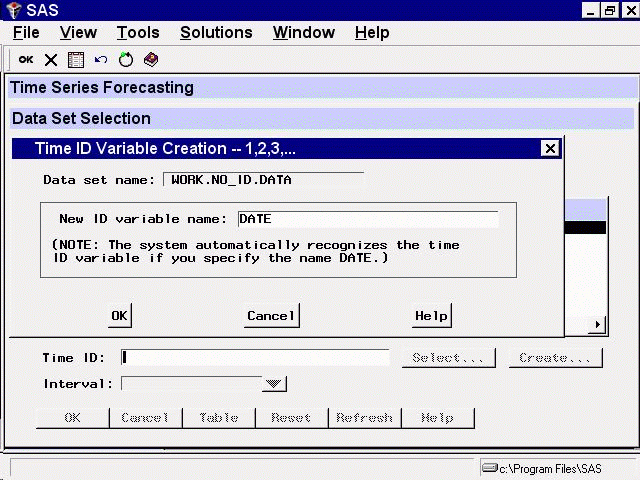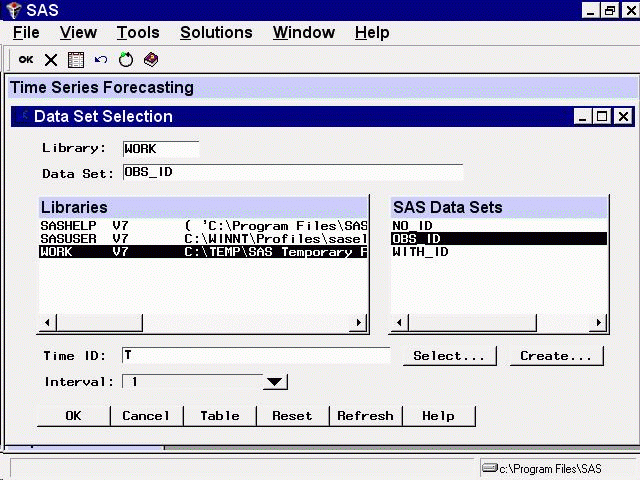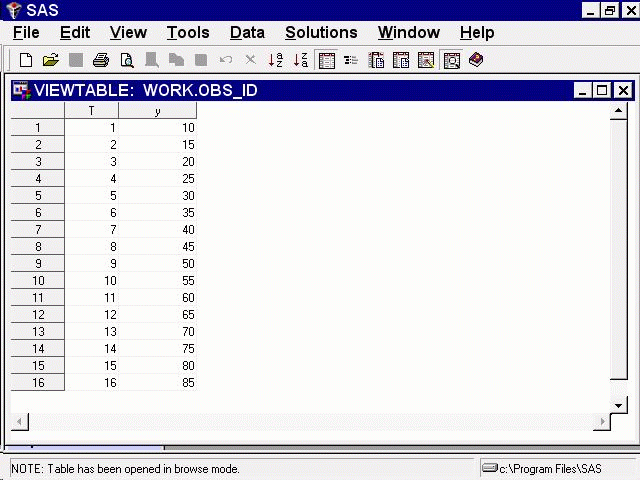Chapter Contents
Previous
Next
|
Chapter Contents |
Previous |
Next |
| Creating Time ID Variables |
Normally, the time ID variable will contain date values. If you do not want to have dates associated with your forecasts, you can also use observation numbers as time ID variables. However, you still must have an ID variable. This can be illustrated by adding an observation index time ID variable to the data set NO_ID.
In the Data Set Selection window, select the data set NO_ID again. Click the Create button to the right of the Time ID field. Select the fourth choice, Create from observation numbers, from the pop-up menu. This brings up the Time ID Variable Creation window shown in Display 24.5.
Display 24.5: Create Time ID Variable Window
Select the OK button. This brings up the New Data Set Name window. Enter "OBS_ID" in the New data set name field. Enter "T" in the New ID variable name field.
Now select the OK button. The new data set OBS_ID is created, and the system returns to the Data Set Selection window, which now appears as shown in Display 24.6.
Display 24.6: Data Set Selection Window after Creating Time ID
The Interval field for OBS_ID has the value `1'. This means that the values of the time ID variable T increment by one between successive observations.
Select the Table button to look at the OBS_ID data set, as shown in Display 24.7.
Display 24.7: VIEWTABLE of Data Set with Observation Index ID
Select File and Close to close the VIEWTABLE window. Select the OK button from the Data Set Selection window to return to the Time Series Forecasting window.
|
Chapter Contents |
Previous |
Next |
Top |
Copyright © 1999 by SAS Institute Inc., Cary, NC, USA. All rights reserved.